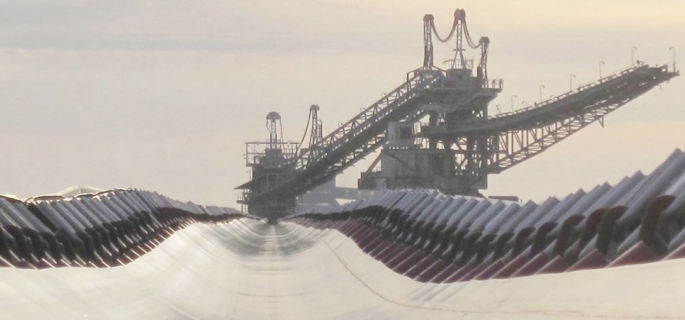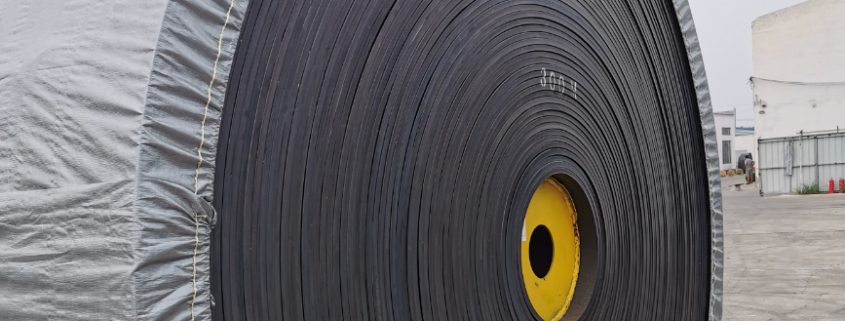This blog post delves into the world of the Scandura conveyor belt, highlighting the company’s unwavering commitment to quality and innovation. As we journey through Scandura’s impressive legacy, we’ll uncover how their dedication to excellence in conveyor belt technology has made a significant impact in various industries, setting the standard for durability, efficiency, and performance in material handling solutions. Join us as we explore the remarkable story of Scandura and its contributions to the conveyor belt industry.
Read moreThe conveyor belt Singapore plays an indispensable role in the dynamic industrial landscape, serving as the backbone for numerous sectors, from manufacturing to logistics. This introduction delves into the world of conveyor belt solutions in Singapore, highlighting their critical importance in streamlining operations and enhancing productivity across various industries. We will explore the offerings of leading conveyor belt suppliers and distributors in the region, such as MIS Belt Centre and Bando Singapore, who have established themselves as pivotal players in providing robust and efficient conveyor belt systems. Their contributions not only reflect the technological advancements in conveyor belt solutions but also underscore Singapore’s commitment to maintaining a cutting-edge industrial sector.Singapore conveyor belts support many industries such as manufacturing and logistics, and play an indispensable role in improving production efficiency and transportation efficiency.
Read moreA conveyor belt stitcher plays a pivotal role in the maintenance and repair of conveyor systems, which are integral to numerous industries. These specialized tools, known as conveyor belt stitchers, are designed to efficiently repair and join conveyor belts, ensuring their continuous operation and longevity. This introduction provides an overview of the diverse types of conveyor belt stitchers available in the market, each tailored to meet specific industrial needs. From heavy-duty stitchers capable of handling robust materials in mining and manufacturing to more precise stitchers used in packaging and distribution, the variety of conveyor belt stitchers reflects their crucial role in keeping conveyor systems operational across different sectors. Understanding these tools and their applications is key to effective conveyor belt maintenance and repair.
Read moreIn the realm of industrial machinery, the term conveyor belt is ubiquitous, yet it is surrounded by a plethora of alternative terminologies and colloquialisms. This introduction aims to shed light on the concept of a conveyor belt synonym and its significance across various contexts. The language used to describe conveyor belts is not just a matter of technical terminology; it also encompasses a rich tapestry of vernacular expressions, reflecting the diverse environments in which these belts operate. Understanding these synonyms is crucial for professionals navigating through different industrial landscapes, as well as for linguists and historians tracing the evolution of industrial language.
Read moreThe role of a conveyor belt technician is pivotal in the seamless operation of material handling systems across various industries. These technicians specialize in the installation, maintenance, and repair of conveyor belts, a critical component in manufacturing, mining, and transportation sectors. Their expertise ensures the efficient movement of goods and materials, which is essential for the productivity and success of these industries. As industries evolve with technological advancements, the demand for skilled conveyor belt technicians grows, highlighting their significant role in supporting the backbone of industrial operations. Their work not only ensures operational efficiency but also plays a crucial role in workplace safety, making them indispensable in settings where conveyor systems are integral.
Read moreConveyor belt systems are integral to numerous industries, streamlining operations and enhancing productivity. However, the efficiency and safety of these systems hinge significantly on the integrity of the conveyor belts themselves. This is where conveyor belt testing plays a crucial role. By rigorously assessing various aspects of conveyor belts, such as their tensile strength, abrasion resistance, and overall durability, testing ensures that these belts can handle the demanding conditions of industrial use. Regular testing not only helps in maintaining operational efficiency but also plays a vital part in ensuring the safety of the workers and the life of the conveyor belts. Through systematic testing, potential issues can be identified and rectified before they escalate into major problems, thereby safeguarding both the conveyor system’s functionality and the investment made in it.
Read moreConveyor belt thickness is a pivotal aspect in the realm of industrial applications, holding significant sway over both performance and durability. This concept is not merely about the physical dimension; rather, it embodies the capacity of conveyor belts to withstand various operational demands. The thickness of a conveyor belt is tailored to cater to the specific requirements of the material it conveys, the environment it operates in, and the mechanical stresses it endures. It acts as a critical factor in determining the belt’s resistance to wear and tear, impact, and overall longevity. In essence, the right conveyor belt thickness is instrumental in ensuring seamless, efficient, and cost-effective material handling, thereby playing a key role in the optimization of industrial processes. This brief overview underscores its importance and sets the stage for a deeper exploration into how conveyor belt thickness impacts the intricate world of conveyor systems.
Read moreConveyor belts play a pivotal role in various industries, streamlining the transportation and handling of materials in sectors ranging from mining and manufacturing to packaging and distribution. These belts, often the backbone of large-scale production and logistics operations, ensure efficiency, safety, and reliability in material handling. Among the critical components of these systems are “conveyor belt teeth” – a feature that significantly enhances the precision and grip of the belt. Conveyor belt teeth are integral in maintaining the synchronization and alignment necessary for the smooth operation of the conveyor system. Their design and material composition are tailored to meet the specific demands of different industrial environments, making them a key factor in the functionality and efficiency of conveyor belt systems. Understanding the significance of conveyor belt teeth is essential for optimizing the performance and longevity of these indispensable industrial tools.
Read moreThe concept of conveyor belt transportation has a rich history, tracing back to the late 19th century. Initially developed for moving bulk materials like coal in mining operations, it has evolved significantly over the years. Today, conveyor belt transportation is an indispensable part of numerous industries, ranging from manufacturing and logistics to airports and supermarkets. Essentially, it involves the movement of goods and materials over a continuous belt loop, which is set in motion by a series of rotating pulleys. This system has revolutionized the way items are transported within facilities, offering a seamless, efficient, and cost-effective solution. Its adaptability allows for handling a diverse range of products, from small components to large pallets, making conveyor belt transportation a cornerstone in the modern industrial landscape. This introduction aims to provide a basic understanding of the role and functionality of conveyor belt systems across various sectors.
Read moreThe top layer of a conveyor belt, often referred to as the conveyor belt top, plays a crucial role in various industrial applications. It is the primary contact surface for the materials being transported, and its characteristics significantly influence the efficiency and safety of the conveyor system. This introduction explores the diverse types of conveyor belt tops available in the market, each designed to meet specific operational needs. From rough top belts for inclined conveyance to smooth tops for delicate handling, the selection of the right conveyor belt top is vital for optimizing performance, minimizing wear and tear, and ensuring the longevity of the conveyor system. Understanding the different conveyor belt tops and their applications is key to selecting the most suitable option for any given industrial task.
Read moreContact us
No. 11, Bocheng Street, Boye County, Baoding City, Hebei Province, China
+86 13803289191
NEWS
 How a Multi Ply Conveyor Belt Enhances EfficiencyJune 18, 2024 -
How a Multi Ply Conveyor Belt Enhances EfficiencyJune 18, 2024 - What is Conveyor Belt Ply and Conveyor Belt Ply AdhesionJune 18, 2024 -
What is Conveyor Belt Ply and Conveyor Belt Ply AdhesionJune 18, 2024 - Necessary Cold Resistant Conveyor BeltJune 18, 2024 -
Necessary Cold Resistant Conveyor BeltJune 18, 2024 -










